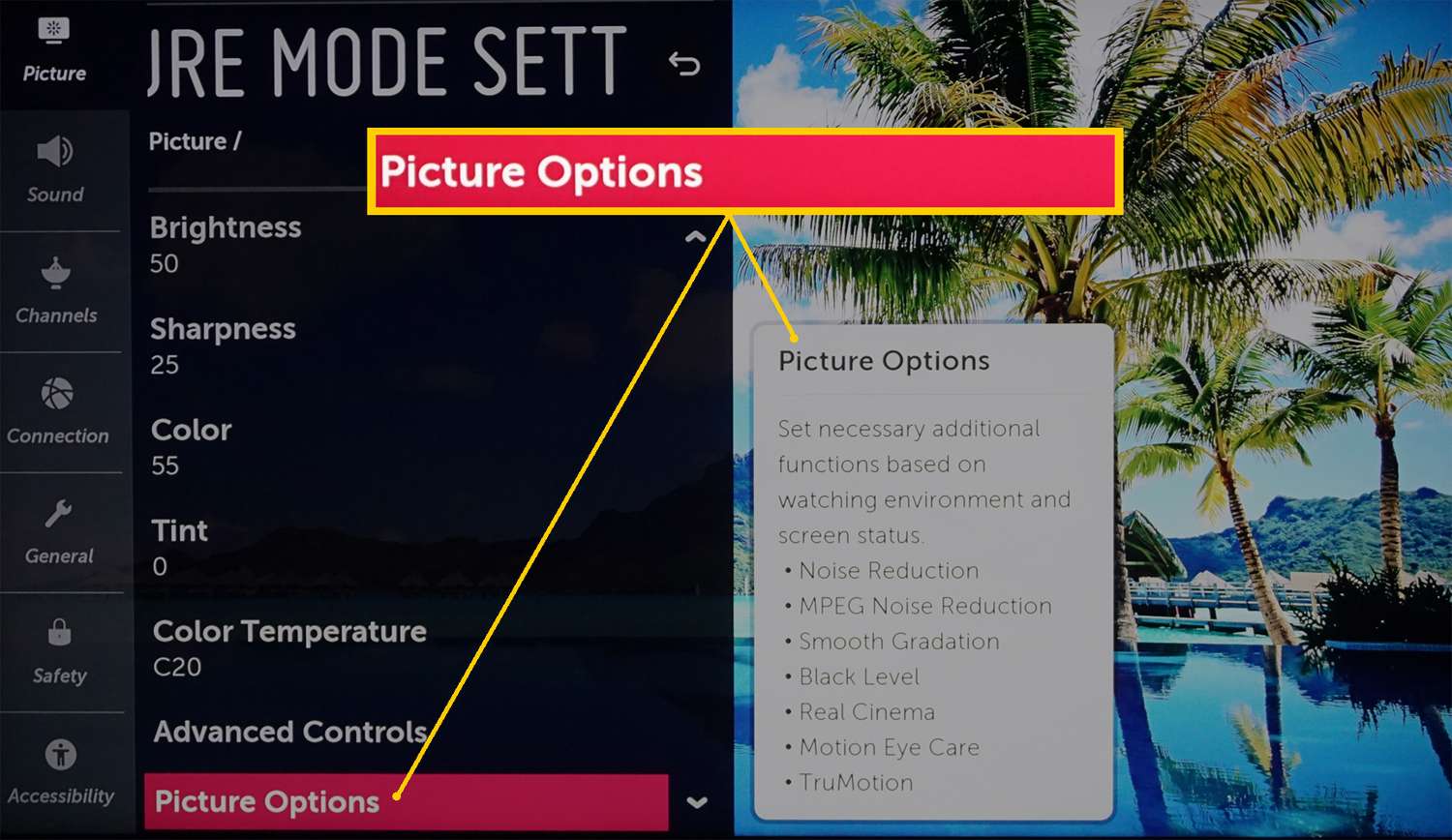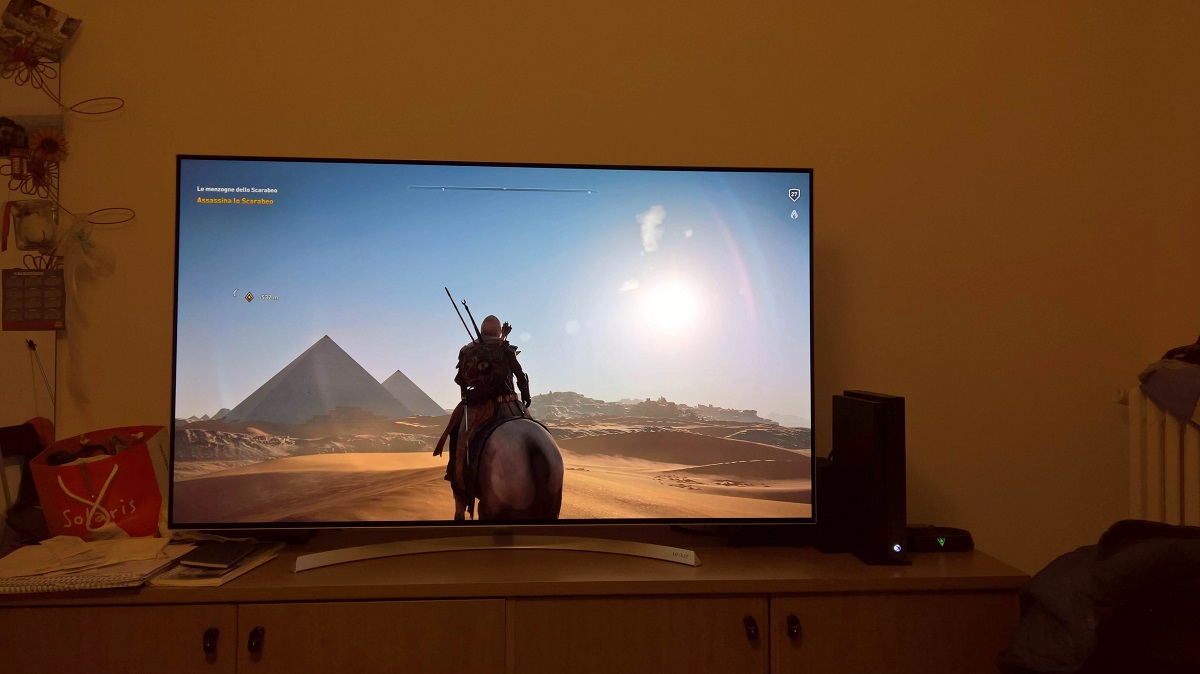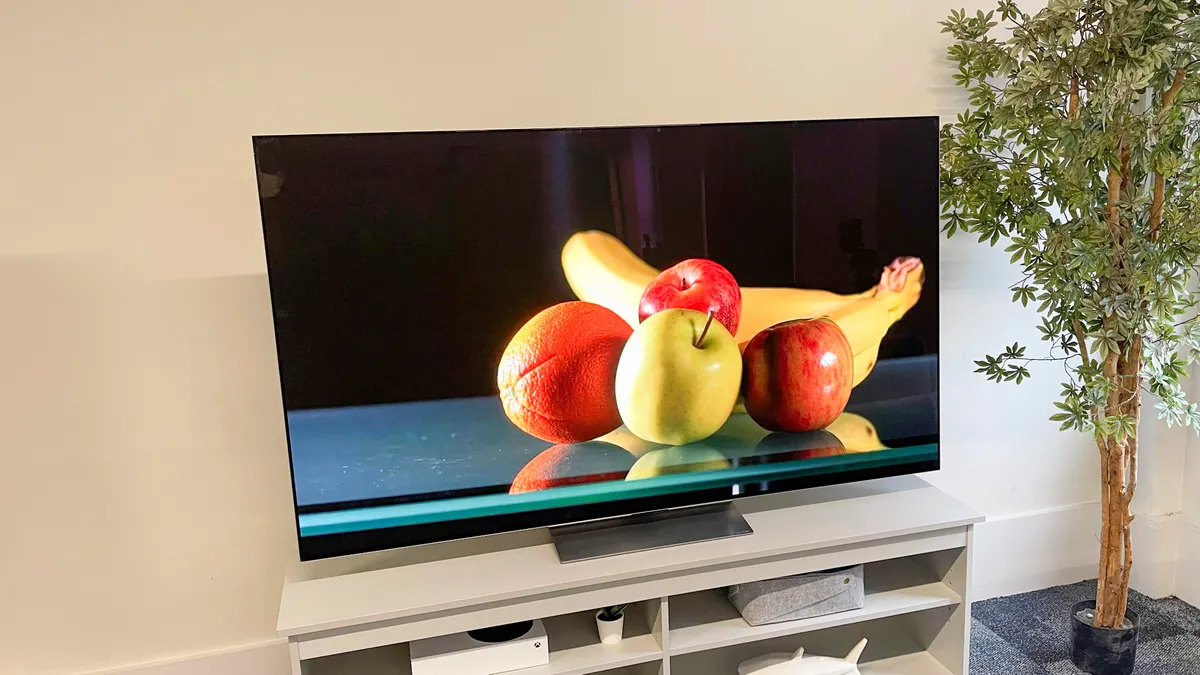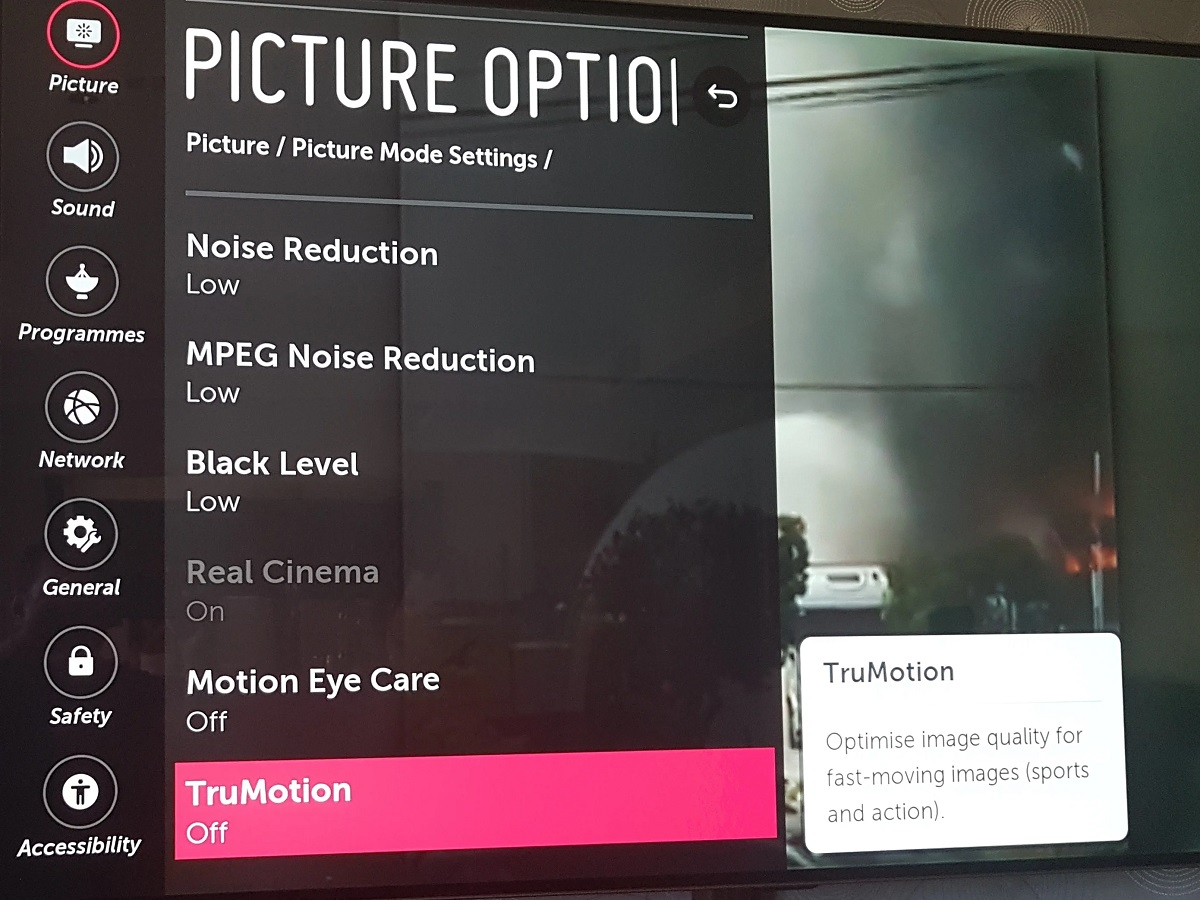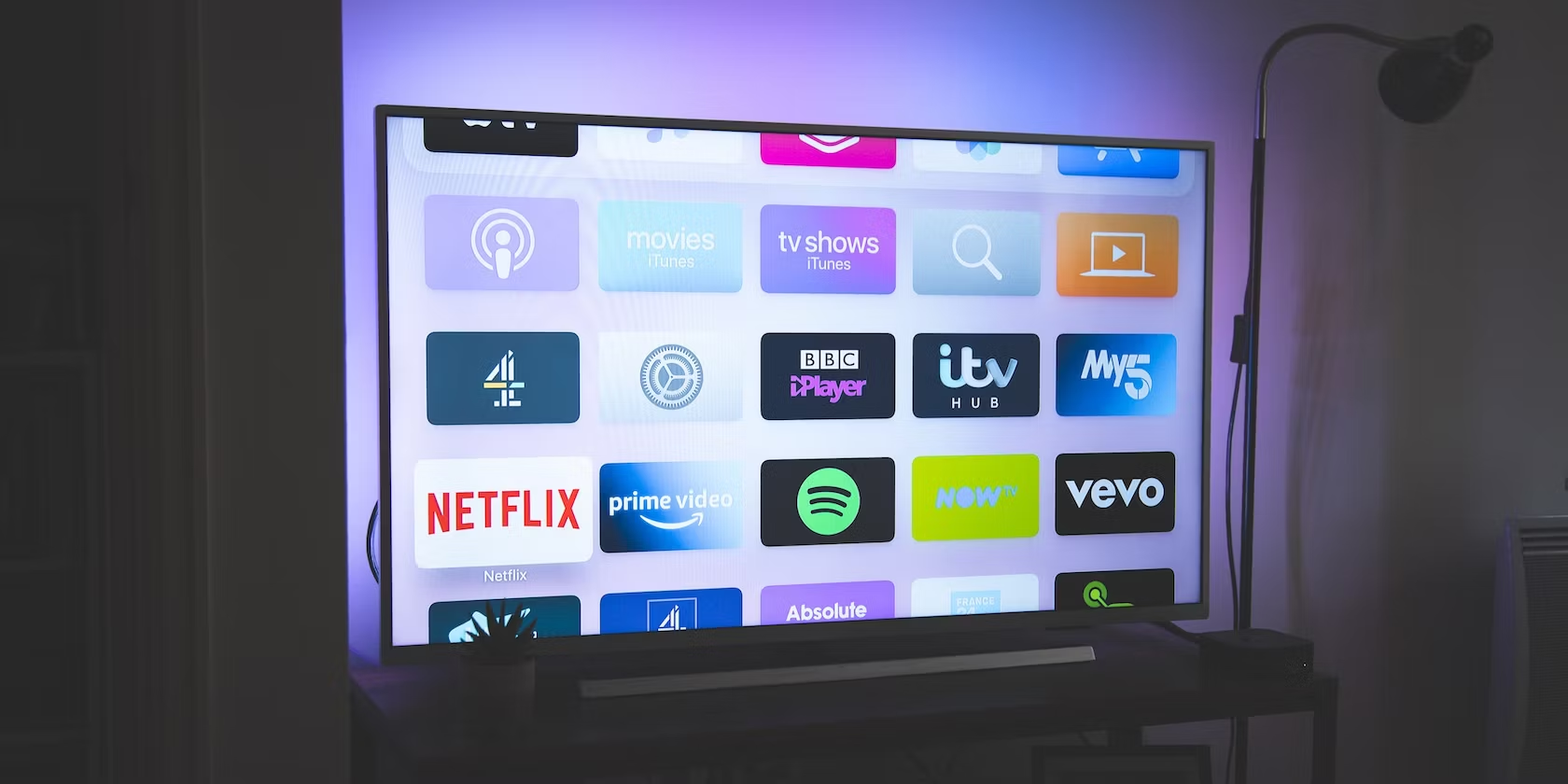Introduction
Welcome to the world of OLED TVs, where the brilliance of colors and the depth of contrast come together to provide an unparalleled viewing experience in your living room. However, as an OLED TV owner, you might have noticed that sometimes the screen appears darker than expected, leaving you wondering why your OLED TV looks dark.
Before diving into the reasons behind the perceived darkness on your OLED TV, it’s important to understand the technology behind OLED (Organic Light-Emitting Diode) displays. Unlike traditional LED-backlit LCD displays, OLED TVs function by individually illuminating each pixel, resulting in perfect blacks and superior contrast.
While OLED technology offers exceptional picture quality, it’s essential to note that perceived darkness is a subjective experience influenced by various factors. In this article, we will explore these factors and provide insights on how to optimize the dark levels on your OLED TV.
From ambient lighting to settings adjustments, we will discuss the techniques that can help you achieve the best possible black levels on your OLED TV. Whether you want to enhance your movie-watching experience, enjoy immersive gaming sessions, or simply showcase stunning photography on your TV screen, understanding the reasons behind the dark appearance is crucial to make the most of your OLED TV.
So, let’s delve into the intricate details of OLED technology and unveil the secrets to optimizing the dark levels on your TV screen. By the end of this article, you’ll be equipped with the knowledge and tools to enhance your viewing experience and appreciate the exceptional capabilities of your OLED TV.
Understanding OLED Technology
Before we explore the reasons behind the darkness on your OLED TV, it’s essential to gain a deeper understanding of OLED technology itself. Unlike traditional LCD screens, which rely on a backlight to illuminate the pixels, OLED TVs emit light directly from each pixel.
OLED displays are made up of organic compounds that emit light when an electric current is applied. This allows for precise control over each pixel’s brightness and color, resulting in infinite contrast levels and vibrant, true-to-life colors.
One of the key advantages of OLED technology is its ability to produce perfect blacks. When a pixel is turned off, it emits no light, resulting in a pure black color. This is because each pixel in an OLED TV is self-emitting and can be independently controlled to turn on or off.
Unlike LCD panels that use a backlight, OLED TVs can achieve true black levels by completely turning off individual pixels. This creates a stark contrast between the dark and bright areas of the screen, resulting in a more immersive viewing experience.
Additionally, OLED technology offers wider viewing angles, ensuring that the colors and contrast remain consistent, even when viewed from different positions in the room. This is because OLED screens do not rely on a backlight that can cause light bleed or dimness at certain angles.
With a clear understanding of the fundamental principles behind OLED technology, we can now delve into the factors that contribute to the perceived darkness on your OLED TV screen. By identifying these factors, we can take the necessary steps to optimize the black levels and enhance your overall viewing experience.
The Role of Black Levels in Picture Quality
Black levels play a crucial role in the overall picture quality of an OLED TV. They are responsible for creating contrast, depth, and the perceived richness of colors in the image. The deeper the black levels, the more pronounced and vibrant the other colors on the screen appear.
When it comes to OLED technology, achieving true black levels is a key capability that sets it apart from other display technologies. As mentioned earlier, OLED pixels can be individually turned off, resulting in a true absence of light and creating a pure black color.
Having deep black levels is essential because it allows for a wider dynamic range, which is the difference between the darkest and brightest parts of an image. This range enables OLED TVs to display details in both the shadows and the highlights without compromising on accuracy or clarity.
High-quality black levels also contribute to better image realism and overall immersion. They enhance the viewing experience by providing a greater sense of depth, allowing objects and scenes to appear more three-dimensional. This creates a captivating and lifelike visual experience that draws you into the content you’re watching.
On the other hand, if the black levels are not optimized correctly, it can lead to a loss of detail and contrast in dark scenes, resulting in a washed-out or muddy appearance. This can be particularly noticeable when watching movies or playing games with low-light or atmospheric settings.
To ensure optimal black levels on your OLED TV, it’s crucial to consider various factors such as ambient lighting, room setup, and TV settings. By properly calibrating your TV and controlling external influences, you can enhance the black levels and improve the overall picture quality of your OLED TV.
Factors Affecting the Perceived Darkness
While OLED technology is capable of producing deep black levels, the perceived darkness on your OLED TV screen can be influenced by several factors that go beyond the display technology itself. Understanding these factors is crucial to determine the optimal settings and conditions for your viewing experience.
Ambient lighting is one of the primary factors that can affect the perceived darkness on your OLED TV. The presence of bright or direct lighting in the room can create reflections on the TV screen, diminishing the overall contrast and making the image appear darker. It’s advisable to minimize ambient light by drawing curtains or blinds and positioning your TV away from direct light sources.
In addition to ambient light, the settings on your TV can also impact the perceived darkness. Manufacturers often apply default settings that may not be optimized for the specific environment in which you are watching. Adjusting settings such as brightness, contrast, and gamma can greatly affect the black levels and overall image quality. Experiment with the settings to find the right balance that suits your preferences and viewing conditions.
Content itself can also play a role in the perceived darkness. Some movies or TV shows are intentionally filmed with a darker aesthetic to create a specific mood or atmosphere. In such cases, the darker scenes may appear less detailed, but this is often an intentional artistic choice rather than a flaw in the TV’s performance. It’s important to consider the content itself when assessing the darkness and not attribute it solely to the TV’s capabilities.
Another factor to consider is the age of your OLED TV. Over time, OLED panels can experience burn-in or degradation, which may affect the overall picture quality, including the black levels. If you notice a significant decline in the dark performance, it may be worth contacting the manufacturer for assistance or considering a professional calibration.
Lastly, remember that the perception of darkness is subjective and can vary from person to person. Your eyesight, viewing distance, and personal preferences can all contribute to how you perceive the darkness on your OLED TV. It’s essential to find a balance that meets your individual expectations and ensures an enjoyable viewing experience.
By taking these factors into account, you can evaluate and address any issues affecting the perceived darkness on your OLED TV. With proper adjustments and optimization, you can maximize the true potential of your OLED display and enjoy stunning visuals with rich blacks and vibrant colors.
Calibrating Your OLED TV for Optimal Black Levels
Calibrating your OLED TV is crucial to achieve optimal black levels and enhance the overall picture quality. By fine-tuning the settings, you can ensure that your TV accurately reproduces the intended colors and contrast levels intended by content creators. Here are some steps you can take to calibrate your OLED TV:
1. Begin by selecting the appropriate picture mode. Most TVs offer preset picture modes like “Cinema,” “Standard,” or “Game.” Choose a mode that provides a balanced and natural picture, as some modes may have enhanced settings that could affect the black levels.
2. Adjust the brightness setting. Start by setting the brightness level to its default value and then gradually increase or decrease it to your preference. Be cautious not to set it too high, as it may result in crushed blacks or loss of shadow detail. Use a calibration pattern or test images to guide you in finding the right balance.
3. Fine-tune the contrast and backlight settings. The contrast setting determines the difference between the darkest and brightest elements on the screen, while the backlight setting adjusts the overall brightness of the display. Experiment with these settings to achieve the desired level of contrast without sacrificing the integrity of dark scenes.
4. Adjust the gamma setting. Gamma controls the overall brightness curve of the image. Fine-tuning the gamma can help bring out shadow details and enhance the overall depth of the picture. Again, use calibration patterns or test images that are specifically designed to adjust gamma to guide you in this process.
5. Disable or adjust any features that enhance black levels. Some TVs have features like “Dynamic Contrast” or “Local Dimming” that are designed to enhance black levels. While these features can be effective, they may introduce unwanted artifacts or affect the overall picture quality. Experiment with these features and find a balance that works for you.
6. Consider professional calibration. If you want to ensure the most accurate and precise calibration, consider hiring a professional to calibrate your OLED TV. They have the expertise and specialized equipment to fine-tune your settings and provide the best possible picture quality.
Remember, calibration is a personal and subjective process. Take the time to experiment with different settings, test patterns, and your own visual preferences to find the optimal balance that suits your viewing preferences.
By calibrating your OLED TV, you can unlock its true potential and enjoy exceptional black levels, vibrant colors, and an immersive viewing experience that truly showcases the capabilities of your OLED display.
Dealing with Ambient Light and Reflections
Ambient light and reflections can have a significant impact on the perceived darkness and overall picture quality of your OLED TV. To optimize the black levels and minimize distracting reflections, consider the following tips:
1. Control ambient lighting: Bright lights in the room can create reflections on the TV screen, reducing the contrast and making the image appear darker. To minimize this, draw curtains or blinds to block out external light sources. If you have overhead lights, consider using lamps or dimmers instead to create a softer, more ambient lighting environment.
2. Adjust the viewing position: Positioning your TV in a way that minimizes direct light sources or bright windows can help alleviate the impact of ambient light. Angle the TV slightly away from windows or position it in a way that reduces the potential for reflections. You can also try changing the angle of your seating to avoid direct light hitting the screen.
3. Use anti-glare filters or films: If reflections are persistent, consider using anti-glare filters or films that are specifically designed to minimize reflections and improve the viewing experience. These can be applied directly to the TV screen and help to diffuse and scatter light, reducing the impact of ambient reflections.
4. Optimize room lighting: Consider using bias lighting behind your TV to reduce eye strain and enhance contrast. Bias lighting is a gentle, indirect light source placed behind the TV that provides a subtle glow. It reduces the strain caused by the high contrast between a dark screen and a brightly lit room, helping to improve the perceived black levels and overall picture quality.
5. Consider a TV screen glare reduction solution: Certain products, such as glare reduction films or hoods, can help minimize reflections by reducing glare on the TV screen. These solutions typically work by absorbing or diffusing light, providing a clearer view of the screen and improving the black levels.
By implementing these strategies, you can effectively deal with ambient light and reflections and optimize the black levels on your OLED TV. Remember, the goal is to create an environment that minimizes external distractions and allows you to fully appreciate the stunning visuals and true black performance of your OLED display.
Troubleshooting Common Issues with Dark OLED TVs
While OLED TVs are known for their exceptional picture quality and deep black levels, there can be instances where you may experience issues with dark scenes appearing excessively dim or lacking detail. Here are some common issues you may encounter and troubleshooting steps to resolve them:
1. Confirm the picture mode: Check if your TV is set to a specific picture mode that may be affecting the brightness or contrast levels. Resetting the picture mode to the default or adjusting the settings within the current mode can help restore the proper black levels.
2. Adjust the brightness setting: If dark scenes appear too dim, check the brightness setting on your TV. Increasing the brightness slightly can help bring out the necessary details without sacrificing the overall image quality. Be cautious not to set it too high, as it may introduce crush or loss of shadow detail.
3. Verify the content source: Sometimes, the issue may not lie with the TV itself but rather the content being played. Check if the issue persists across different sources or streaming platforms. It’s possible that the specific show or movie you’re watching has intentionally dimly lit scenes that may appear darker than usual.
4. Update your TV’s firmware: Check for any available firmware updates for your OLED TV. Manufacturers regularly release updates that address performance issues and improve overall picture quality. Updating your TV’s firmware can potentially resolve any software-related issues that may be affecting the brightness or black levels.
5. Check for energy-saving settings: Some TVs have energy-saving features that can impact the brightness and black levels. These settings are designed to reduce power consumption but can inadvertently dim the screen. Verify if any energy-saving settings are enabled and consider disabling them to restore optimal brightness.
6. Consider professional calibration: If you have exhausted all troubleshooting options and are still unsatisfied with the black levels on your OLED TV, it may be worth considering professional calibration. Professional calibrators have the expertise and specialized equipment to fine-tune the settings and ensure that your TV is performing at its best.
7. Assess room lighting conditions: Take a moment to evaluate the lighting conditions in your viewing room. Excessive ambient light or reflections can negatively impact black levels and overall picture quality. Refer to the previous section on dealing with ambient light and reflections for tips on optimizing your viewing environment.
By troubleshooting these common issues, you can overcome any difficulties you may encounter with dark OLED TV scenes. Remember that OLED technology offers incredible black levels, and with the right adjustments and settings, you can fully enjoy the stunning visuals and immersive experience that your OLED TV provides.
Conclusion
In conclusion, understanding the reasons behind the perceived darkness on your OLED TV and taking steps to optimize the black levels can greatly enhance your viewing experience. OLED technology offers unparalleled picture quality with its ability to produce perfect blacks and vibrant colors. However, several factors can affect the perceived darkness, including ambient light, room setup, content, and TV settings.
Through proper calibration, adjusting settings, and controlling ambient lighting, you can achieve optimal black levels on your OLED TV. Fine-tuning the brightness, contrast, backlight, and gamma settings can help bring out details in dark scenes without sacrificing overall image quality. It’s also important to consider the content being watched, as some movies or shows may intentionally have darker scenes for artistic purposes.
Dealing with ambient light and reflections is another crucial aspect of improving black levels. By controlling ambient lighting in your room, adjusting viewing positions, and using anti-glare solutions, you can minimize distracting reflections and optimize the contrast on your OLED TV screen.
If you encounter any issues with your OLED TV, troubleshooting can help identify and resolve common problems. Checking picture modes, adjusting settings, updating firmware, and assessing room lighting conditions are some steps you can take to address these issues and restore optimal black levels.
In the end, calibrating your OLED TV for optimal black levels is a personal and subjective process. It’s essential to experiment with different settings, consider your viewing environment, and take your preferences into account to find the perfect balance that suits your needs and enhances your viewing enjoyment.
By understanding the technology behind OLED displays and implementing the techniques discussed in this article, you can unlock the full potential of your OLED TV, immersing yourself in breathtaking visuals with deep blacks and vibrant colors.
So, go ahead and let your OLED TV shine, providing you with an unparalleled viewing experience that brings your favorite movies, shows, and games to life like never before.










